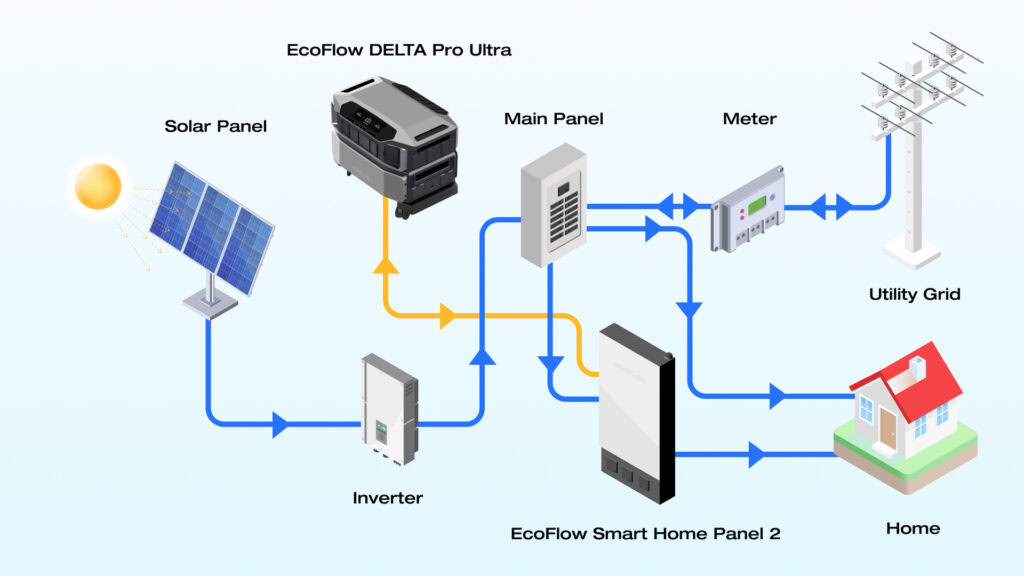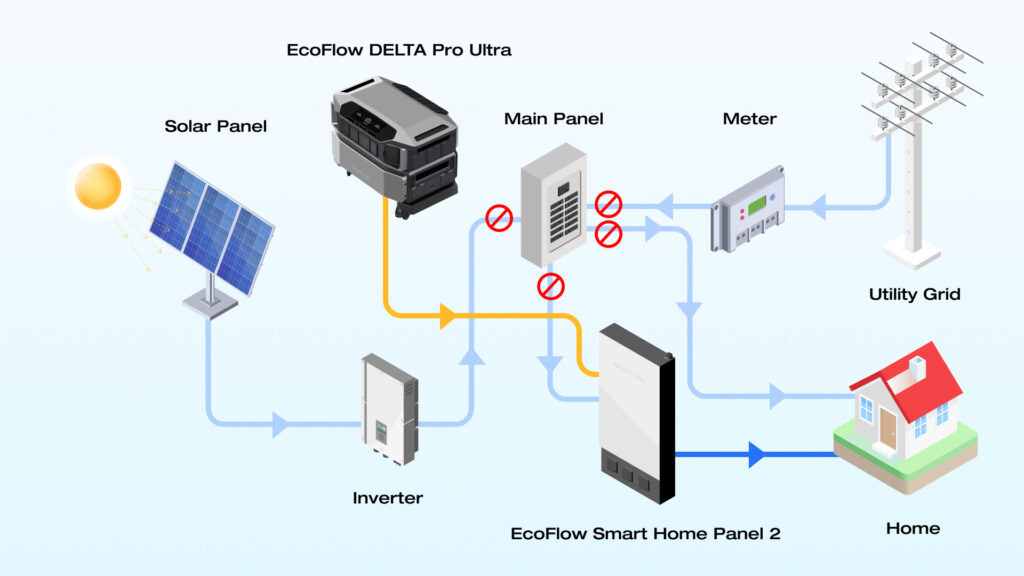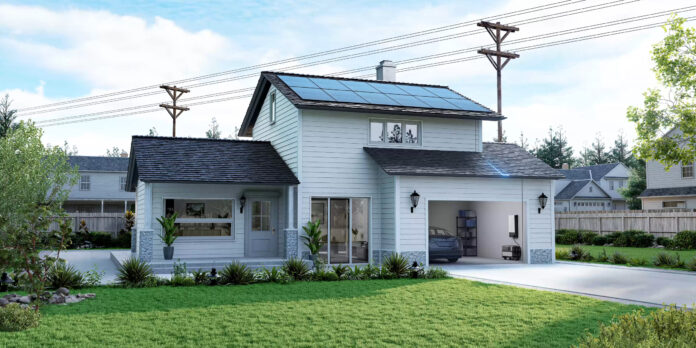What is the Existing Rooftop PV System
Existing Rooftop PV System refers to a solar energy system that has already been installed and is operational on the roof of a building or structure. This system typically consists of solar panels mounted on the roof, connected through wiring to a grid-tied inverter, and integrated with the electrical grid of the building.
Without altering the wiring of the existing grid-tied rooftop PV system, the operation of installing EcoFlow DPU + SHP2 into the residential electrical system will function as follows:
When the grid is present
During the day, the grid-tied rooftop PV system operates normally, supplying power to the household loads and charging the DPU (if the DPU charge has not reached the set upper limit). The DPU+SHP2 system stores as much excess solar power as possible in the DPU. In the evening, during high electricity rate periods, the DPU powers the household loads to maximize cost savings

In the diagram above, it shows your PV system can still power your main panel and store power to DPU.
When the grid is absent
Most of the grid-tied rooftop PV systems will not function, but the DPU will still power the household loads. If you want to extend backup power during grid outages using solar power, it’s only possible to charge the DPU directly by adding new solar panels.

In the diagram above, during a power outage, the PV system will not operate, but you can utilize the power stored in the DPU to run the loads. If you want to charge the EcoFlow Delta Pro Ultra using solar power during an outage, you can purchase additional solar panels separately and connect the solar panels to EcoFlow Delta Pro Ultra directly.
Modifying the wiring of existing rooftop solar systems may raise concerns of invalidating NEM tariff and voiding warranty of solar panel of the PV system. Consumers are strongly recommended to consult with their PV system provider for more information.
